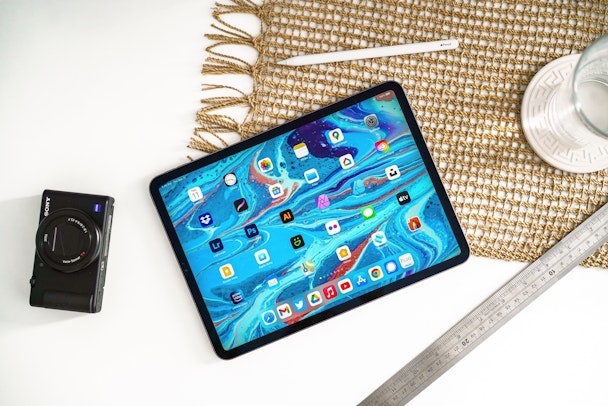App appeal: four steps to successful app engagement
The attrition rates for app users are staggering – but do they have to be? Steve Peretz, group director (health experience and product strategy) at Appnovation, shares four strategies for engagement and retention.

Appnovation on the importance of first impressions in-app
Abandoned shopping carts, neglected Netflix series, snap decisions on Tinder. There’s plenty of evidence that audiences in the digital age have low attention spans and rely heavily on first impressions.
It’s no different with apps. The average app loses 77% of daily users within three days of installation. Within 30 days, it’s 90%. Three months in, 95%.
Often this rapid disengagement results from something simple, such as an error in the app’s design or a frustrating experience. But this negative first impression invariably has adverse commercial consequences for the brand or company behind the app.
Dubbed the ‘halo effect,’ app users can base their entire perception of a business on this initial interaction. They express their dissatisfaction by taking their purchasing power elsewhere.
Fortunately, the halo effect can also work in reverse. Get that first impression right, and customers will stay for longer. Follow up with great customer experience, and they’re likely to spend more, stay loyal and increase frequency of impulse purchasing.
Here are four first impression strategies to help brands achieve a match and ensure initial interactions result in successful engagement:
1. First contact: convey benefits simply and succinctly
Users judge apps by their descriptions. App descriptions and reviews are a fundamental reason people consider a download, so keep it focused. Use relevant keywords. Explain the app’s value proposition concisely. App users don’t want to scroll endlessly to understand the point of a product, so craft a message that cuts through.
Challenger bank Monzo’s app couldn’t be clearer about what it does: ‘Banking made easy.’ Likewise, Deliveroo entices app users by saying: ‘Food: we get it. We all have our favorites. With Deliveroo, get your favorite local restaurants and takeaways delivered straight to your door.’
If the initial messaging easily answers questions around why someone should engage with a digital solution, the brand has hit the bullseye.
2. Debut experience: try before you buy
Sharing a flavor of the app’s experience makes sense before customers commit to the download. If possible, offer the app for free – at least upfront (tiers can come later). Share content that gives a sense of the experience without requiring consumers to hand over personal data. Avoid blitzing people with ads, which will build frustration, not engagement.
Wellbeing app Headspace tells potential customers it will help them ‘Get happy. Stress less. Sleep soundly.’ It then supports app users from the first point of engagement with free educational resources on managing stress, improving sleep and learning to meditate. Users get ample opportunity to build trust in the brand before confidently purchasing the app.
Consider offering a preview video, which increases app conversions by over 20%. A well-crafted video delivers a compelling first impression, building immediate engagement and showing how the app works. For example, podcast and audiobook service Audible differentiates itself with a preview that doubles up as a mini-tutorial and a short promo.
3. Onboarding: use gradual disclosure
After downloading an app, users want to use it immediately. They get frustrated if they can’t engage with an experience quickly. Avoid complex registration processes and complicated tutorials.
Instead, brands need to use gradual disclosure techniques to educate and inform customers about the app in bite-sized chunks. The goal is to tell the audience what they need to know when they need to know it, not overload them.
This can take the form of streamlined content previews, ‘accordion’ elements, mega-menus, sliders or animated hints. Start with the basics and then disclose the more complicated aspects of the solution once the customer needs them.
Shopify is especially adept at gradual disclosure, incorporating the method right from the sign-up page via a non-intrusive pop-up window that explains the domain. Registration processes should be user-friendly and well-tested.
4. Retention: prompt action with instant reward
So far, all the brand has done is get its customer to the starting line. But the main battle begins once the customer is onboard. Work to sustain their early enthusiasm by rewarding their effort immediately and providing instant gratification.
New users should realize that brand interactions will directly lead to personalized rewards. Caffe Nero’s app immediately offers users the opportunity to accumulate stamps for a free coffee, which draws them into an app experience that positions them against competitors through positive reviews on Apple’s App Store.
Elsewhere, health group The Mighty invites new members into the community by extending an invitation to make an introduction. Right away, they feel like a part of the group, having found an online home.
Beware of deterring new users with a barrage of push notifications. It’s a tricky balance, particularly for digital health solutions that require regular inputs (for example, to monitor chronic conditions). If in doubt, err on the conservative side, and restrict communication to relevant, purposeful messages.
Some user attrition is bound to occur, no matter how well-designed the solution. But a strong first impression undoubtedly contributes to committed customer engagement. First impression strategies can help build impactful, purposeful apps with longevity.
Content by The Drum Network member:

Appnovation
Appnovation is a global full-service digital consultancy. We seamlessly integrate strategy, user experience, development, deployment, training and support, allowing...
Find out more
